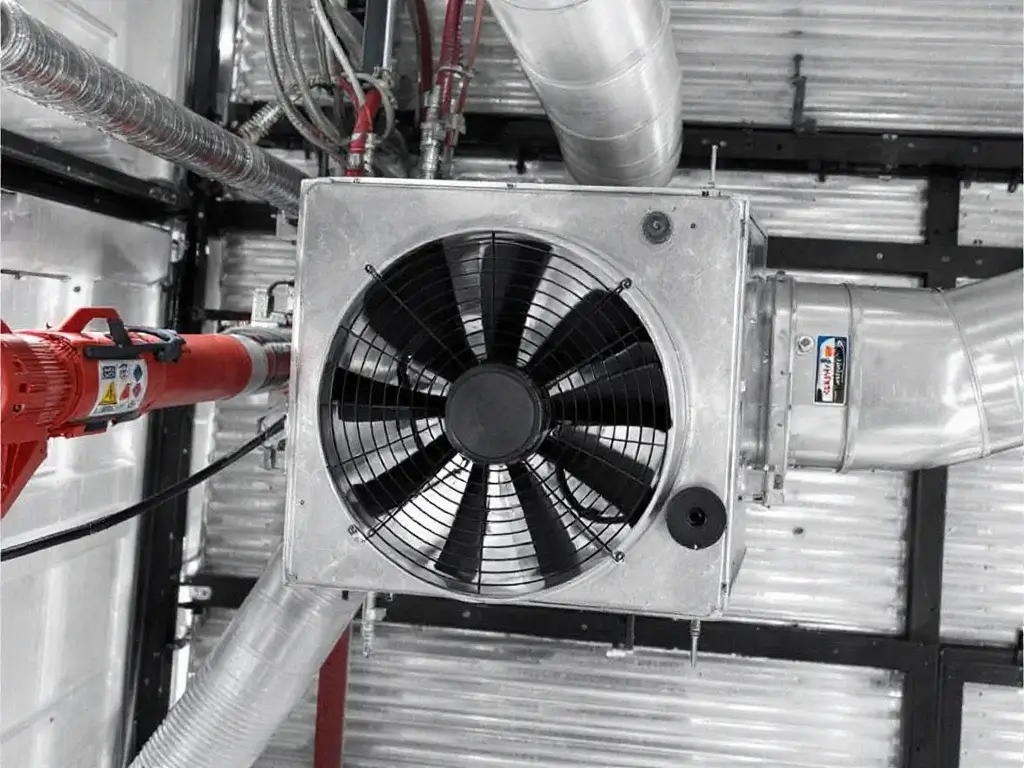
What Is the Purpose of an Exhaust Fan?
Whether in a commercial kitchen, workshop, warehouse or processing facility, air quality plays a critical role in safety, comfort, and compliance. One of the most effective tools for managing air quality is the exhaust fan—a workhorse in ventilation systems that often goes unnoticed but delivers essential benefits.
Why Are Exhaust Fans Important?
At its core, the purpose of an exhaust fan is simple: to extract unwanted air from an indoor environment and replace it with fresh air. This process supports a safe, healthy, and more efficient workplace by addressing several air quality concerns.
Here’s how exhaust fans work and why they’re critical in industrial and commercial settings:
1. Removing Airborne Contaminants
In many facilities, daily operations generate fumes, dust, smoke, grease vapours, or even hazardous gases. Without proper ventilation, these contaminants can accumulate and pose risks to worker health, machinery performance, and product quality. Exhaust fans are designed to draw polluted air out of the space, preventing harmful build-up and maintaining a cleaner work environment.
See also: Edge TV: Revolutionizing Entertainment for the Digital Age
2. Controlling Heat and Humidity
Industrial equipment, lighting, and body heat can quickly raise temperatures—especially in poorly ventilated buildings. Exhaust fans help regulate internal temperatures by removing hot, humid air and replacing it with cooler air from outside. In high-humidity environments, this also helps prevent condensation, rust, and mould growth.
3. Improving Indoor Air Quality and Comfort
Poor air quality can lead to fatigue, reduced concentration, and respiratory irritation. By promoting consistent airflow and reducing stagnation, exhaust fans help maintain a fresh and breathable atmosphere, supporting both worker wellbeing and productivity.
4. Meeting Safety and Compliance Standards
Australian workplace health and safety regulations often require adequate ventilation in areas where fumes, dust, or high heat are present. Installing high-quality exhaust fans helps businesses comply with ventilation standards and mitigate risks of non-compliance or shutdowns.
5. Supporting Other Ventilation and HVAC Systems
Exhaust fans aren’t just standalone solutions—they’re often integrated into broader mechanical ventilation and HVAC systems. By removing stale or contaminated air, exhaust fans reduce the burden on air conditioning units and improve overall energy efficiency.
Common Applications of Exhaust Fans
You’ll find industrial and commercial exhaust fans in a wide range of environments, including:
- Warehouses and workshops
- Food processing and abattoir facilities
- Commercial kitchens and hospitality venues
- Paint shops and chemical storage areas
- Toilets, change rooms, and enclosed amenities
Each application requires fans suited to its unique airflow needs, temperature ranges, and potential hazards.
Choosing the Right Exhaust Fan
The purpose of an exhaust fan might be universal—but the type of fan you choose matters. At Fanquip, we offer a wide range of wall-mounted, roof-mounted, shuttered and explosion-proof exhaust fans, all engineered for Australian conditions and built to perform in the harshest environments.
Whether you’re looking to reduce heat stress, manage odours, or maintain air quality in a confined space, the right exhaust fan can make a significant difference.
Final Word
Exhaust fans are vital to maintaining clean, comfortable and compliant workplaces across countless industries. Their ability to remove unwanted air, regulate temperature, and support overall air circulation makes them an indispensable part of any effective ventilation system.




